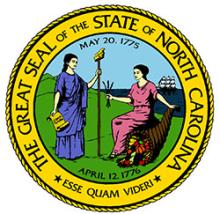
Fast, affordable Internet access for all.

Throughout the October Broadband Communities Magazine conference, folks kept repeating this sentiment: some partnerships are smooth and others have rough patches. At the conference, we heard from several electric cooperatives who had partnered with other cooperatives to provide next-generation connectivity to their communities.
We specifically want to highlight the work of two North Carolina electric cooperatives: Lumbee River EMC and Blue Ridge Mountain EMC. They were both included in our report North Carolina Connectivity: The Good, The Bad, and The Ugly. Each co-op took the bold step of building a Fiber-to-the-Home (FTTH) network throughout sparsely populated regions. At the conference, we were able to learn first-hand about their experiences.
Despite the Distance: Lumbee River EMC & HTC
HTC Chief Executive of Marketing Brent Groome described how the two cooperatives collaborated despite being nearly an hour away from each other. Their work together has involved a commitment to similar values and dedication to improving rural communities. (Lumbee River EMC’s representative was unable to attend the conference as much of the service territory had suffered flooding from the recent hurricane.)
Lumbee River EMC’s entry into Internet service brought fiber connectivity to southeastern North Carolina. The co-op provides electricity to more than 50,000 members. In 2010, the USDA provided Lumbee River EMC with nearly $20 million in funding to install fiber. A state law, however, imposes certain restrictions on electric co-ops and USDA funding. The electric co-op had to find another company with the drive and expertise to provide Internet service.
HTC, also known as Horry Telephone Cooperative, may be far from Lumbee River EMC’s boundaries, but shares the same commitment to community. The electric co-op reached out to HTC in 2013 while completing construction of the FTTH network. Lumbee River EMC had reached out to three other telephone companies, but eventually landed on HTC. After working out an Indefeasible Right of Use (IRU), HTC set to work and signed up the first customer in 2014. Although at times the co-ops had tension, they are both now focused on providing service to rural communities.
Borders And Blue Ridge Mountain EMC
While HTC and Lumbee River EMC were learning to collaborate, Blue Ridge Mountain EMC had already built its own network and been involved in multiple partnerships. The co-op's Director for Economic Development Erik Brinke described how the service territory’s many challenges required the electric co-op to team up with other organizations.
Blue Ridge Mountain EMC's service territory runs along the border between Georgia and North Carolina. The cooperative’s 40,000 members are widely dispersed throughout the southern Appalachian Mountains. The terrain also made fiber deployment difficult, but it did not dissuade the electric co-op.
In 2002, Blue Ridge Mountain EMC brought fiber connectivity to the schools. Then in 2006, the co-op started the process of building their own FTTH network. Recently, the electric cooperative decided to partner with the Ellijay Telephone Company (ETC) to also provide voice and video services over the FTTH network. This was not an entirely new partnership.
Blue Ridge Mountain EMC had already collaborated with ETC, and several other neighboring organizations, to create the North Georgia Network. The group featured county governments and other electric cooperatives. With funding from several federal programs, they built a middle mile fiber network, connecting many rural schools and libraries that previously had shoddy service. The middle mile network improved connectivity for the whole region.
Cooperatives Overcome State Challenges
Several states, however, have legislation that can create complications for electric cooperatives' FTTH projects. For instance, the 1999 North Carolina law requires that electric cooperatives form a separate subsidiary that cannot receive financing from the USDA or the RUS (two common sources of cooperative funding). To navigate such challenges, Lumbee River EMC and Blue Ridge Mountain EMC had to collaborate with others who shared their values. Now, the electric co-op members have access to affordable, high-speed Internet service.
